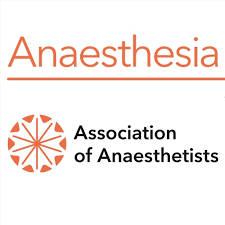Study: Preoperative nutrition program reduces surgical complications, costs

Editor's Note A system-wide preoperative nutrition program resulted in shorter hospital stays and fewer postoperative complications across the Allegheny Health Network, according to a study presented at the American College of Surgeons Clinical Congress 2024. Medical Xpress reported the news October 18. According to the article, researchers analyzed data from…
Study: Repeated fasting for multiple surgeries risks malnutrition, mortality

Editor's Note Research shows repeated fasting for multiple surgeries during a single hospital stay significantly raises the risk of protein-calorie malnutrition, leading to longer recovery times, increased healthcare costs, and a higher likelihood of death. HealthDay covered the news October 21. Presented at the American Society of Anesthesiologists annual meeting,…
Medicare Advantage insurers prioritize profits over patients, Senate reports

Editor's Note A Senate report reveals that Medicare Advantage insurers are increasingly prioritizing profits over patient care by ramping up the use of prior authorization to deny necessary services, particularly post-acute care, for older adults, Becker’s Hospital Review reported October 17. In May 2023, the Senate Permanent Subcommittee on Investigations…
Nurse identification number touted as workforce development tool

Editor's Note As the nursing shortage continues to challenge health systems, the National Council of State Boards of Nursing (NCSBN) is promoting the use of the NCSBN ID, a unique nurse identifier, to help manage and improve the workforce. HealthLeaders covered the possibilities October 14 in article based on an…
Feds warn of increased healthcare cyber threats from Iranian actors

Editor's Note Iranian cyber actors employing techniques such as brute force, password spraying, and multifactor authentication (MFA) "push bombing" to compromise healthcare and other critical infrastructure sectors, the American Hospital Association (AHA) reported October 17. The report cites an October 16 joint advisory issued on October 16 by the FBI,…
Study: Bariatric surgery more cost effective than GLP-1s

Editor's Note Combining newer weight loss drugs with bariatric surgery is the most cost-effective long-term strategy for treating obesity, according to research presented at the American College of Surgeons Clinical Congress 2024. Medical Xpress reported on the findings October 18. According to the article, researchers from Northwestern Medicine evaluated the…
Study quantifies link between preoperative depression, postoperative delirium

Editor's Note Individuals with preoperative depression are at significantly higher risk of developing postoperative delirium, according to a systematic review and meta-analysis of 42 studies involving a total of 4.6 million patients. Published September 4 in Anaesthesia, the study is first review to quantify the incidence and risk of postoperative…
Study: Kidney transplants safe between donors, patients with HIV

Editor's Note An observational study of kidney transplant patients with HIV shows that organs from donors with HIV appeared to be noninferior to those from donors without. Published October 16 in the New England Journal of Medicine, the observational study analyzed 198 kidney transplants conducted at 26 US centers…
Study: Women more likely to die from postoperative complications after high-risk surgery

Editor's Note Female patients undergoing high-risk surgeries are significantly more likely to die from postoperative complications despite experiencing complications at similar rates, according to findings published October 16 in JAMA. Observed in a cohort of 863,305 Medicare beneficiaries, this disparity suggests that clinicians may be less effective at recognizing and…
Study: Same-day aquablation surgery safe for ASCs
Editor's Note Aquablation is safe and effective for treating patients with benign prostatic hypoplasia (BPH) in ambulatory surgery centers (ASCs), according to a video published September 23 by the Urology Times. The video features a discussion with Kevin C. Zorn, MD, FRCSC, FACS, lead author of the study “Safety and…

 Free Daily News
Free Daily News